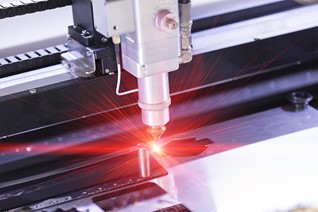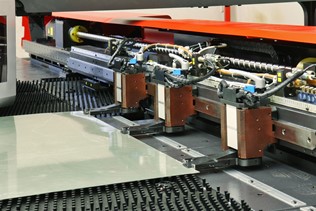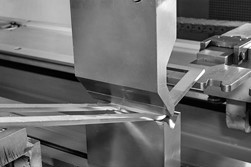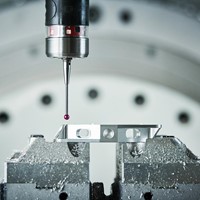Precision Machining & Manufacturing
A variety of Nook products form the cornerstone of many precision machining equipment designs due to their proven ability to handle heavy industrial loads at high speeds with increased accuracy.
Maximum productivity and precision in the most demanding industrial settings.
Nook solutions allow our worldwide machining and fabrication customers to achieve maximum productivity and high end quality in the toughest and most demanding industrial settings.
Modern precision machining equipment must be able to work with a high degree of precision, accuracy and reliability under the most demanding environmental conditions. For over 50 years, Nook linear motion systems have been relied upon to solve a wide array of machine tool equipment design challenges.
Advantages Include:
- Decreased changeover time
- Reduced scrap
- Increased speed and repeatability
- Overall decrease in processing cost
- Maintenance free operation
- Maximum ROI over equipment life cycle
CNC Machining & Milling
CNC machining is a manufacturing process in which pre-programmed computer software dictates the movement of factory tools and machinery. The process can be used to control a range of complex machinery, from grinders and lathes to mills and routers.
- Drilling/Reaming/Boring
- Broaching
- Planing, Milling
- Grinding, Sawing
- Turning

Applications
Nook linear systems provide economical, exceptionally efficient, reliable feed systems with predictable service life for a complete line of machine tools. This provides smooth and steady feed rates at low friction which adds to drill life while providing high quality holes.
- Loading of raw material and unloading of finished product
- Tool Exchange Operations
- Machine Tool Positioning
- Measuring Operations
- Work Piece Handling
- Operation of Doors, Hatches, Covers
- Actuation of Safety Features
Laser Cutting
Laser cutting is an industrial manufacturing application that utilizes a laser to slice materials. While typically used for industrial manufacturing applications, it is also starting to be used by schools, small businesses, and hobbyists. Laser cutting works by directing the output of a high-power laser most commonly through optics. These optics and CNC (computer numerical control) are used to direct the material or the laser beam generated. The focused laser beam is directed at the material, which then either melts, burns, vaporizes, or is blown away by a jet of gas leaving an edge with a high-quality surface finish.
Advantages Include:
- High Efficiency
- Extremely Smooth Input in-Feed
- High Speed Cutting
- Low Maintenance
- Reliability
- Long Life
- Precise Positioning

Stamping
The increased accuracy of Nook products minimizes burrs. This significantly reduces part cost while speeding up throughput and delivery.
Metal stamping is a cold-forming process that makes use of dies and stamping presses to transform sheet metal into different shapes. Pieces of flat sheet metal, typically referred to as blanks, are fed into a stamping press. This press uses a tool and die surface to form the metal into a new shape. Production facilities and metal fabricators place the material between die sections, where pressure shapes and shear the material to the desired final shape for the product or component.
Metal stamping machines can also cast, punch, cut and shape metal sheets. Machines can be programmed or computer numerically controlled (CNC) to offer high precision and repeatability for each stamped piece. Progressive, forming, compound, and carbide tooling perform specialized stamping functions. Progressive dies can be used to create multiple pieces on a single piece simultaneously.
Metal stamping is a complex process that can include:
- Blanking, Punching, Bending, Piercing, Embossing, Coining, Flanging

Bending and Metal Fabrication
The metal fabrication industry is capital intensive and machinery is becoming increasingly sophisticated as automation and CNC techniques are largely being employed. Metal fabricators have to learn to constantly change production lines as customers require more diverse products that suit their specific needs. Motor driven Nook linear motion systems increase metal forming accuracy at high traverse speeds with precise incremental or absolute positioning. These highly repeatable bend angles and uniform feed rates minimize cost by reducing scrap and excess inventory.
Metal can be converted into many different structures through the use of metal fabrication techniques. The processes involved in metal fabrication can vary from:
- Cutting
- Welding
- Burning
- Forming

Ball Screw Application: Precision Machining
Precision machining is a type of technical manufacturing that is essential in creating and designing machines, parts, tools, and other hardware that are essential in modern...




